This was no ordinary tank that could slow an entire Panzergruppe in its advance on Leningrad.
It was the KV-2 heavy tank, a massive colossus of an armored assault gun.
The Source
The KV-2 was essentially a war baby.
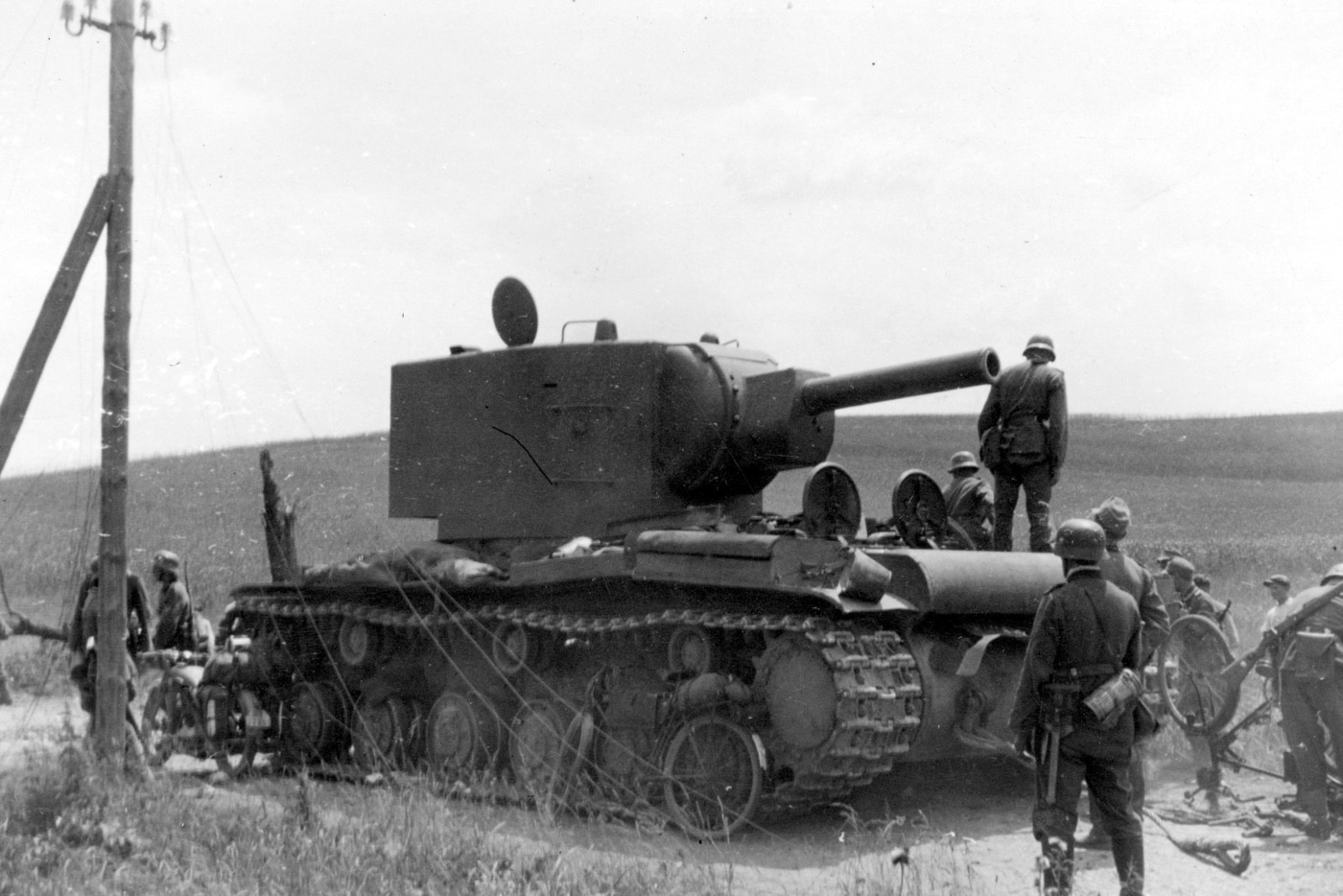
German soldiers look at an abandoned, damaged Soviet KV-2 heavy tank. Image: National Digital Archives of Poland
The new KV heavy tank hull was selected, and a massive turret containing a 152mm howitzer installed.
The results of the test were satisfactory, and the Red Army accepted the KV-2 into service.
Clerks and typists throughout the Red Army rejoiced when the nomenclature was simplified to KV-1 and KV-2.
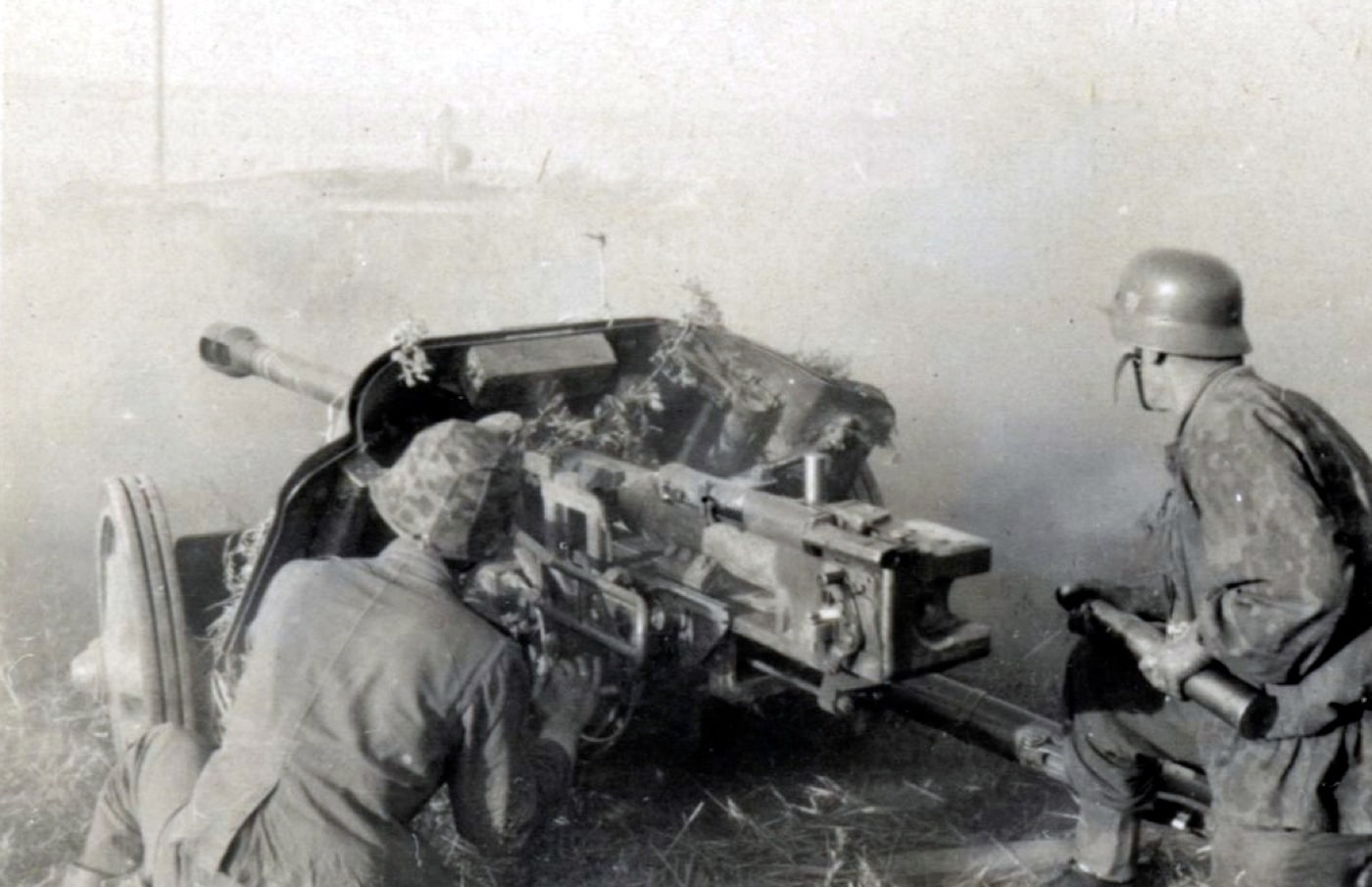
When fighting the KV-2 tank, the Germans brought up their latest anti-tank gun, the 50mm Pak 38. At 500 meters, the Pak 38 could penetrate 79mm of armor with AP/APC ammunition. Image: NARA
The KV-2s 152mm M-10 howitzer fired a 51kg HE projectile with muzzle velocity of 1,430 feet per second.
The KV-2 turret was incredibly heavy, and it proved almost impossible to traverse when not on level ground.
The Germans were quite impressed with the KV-2, and they took several captured examples into service.
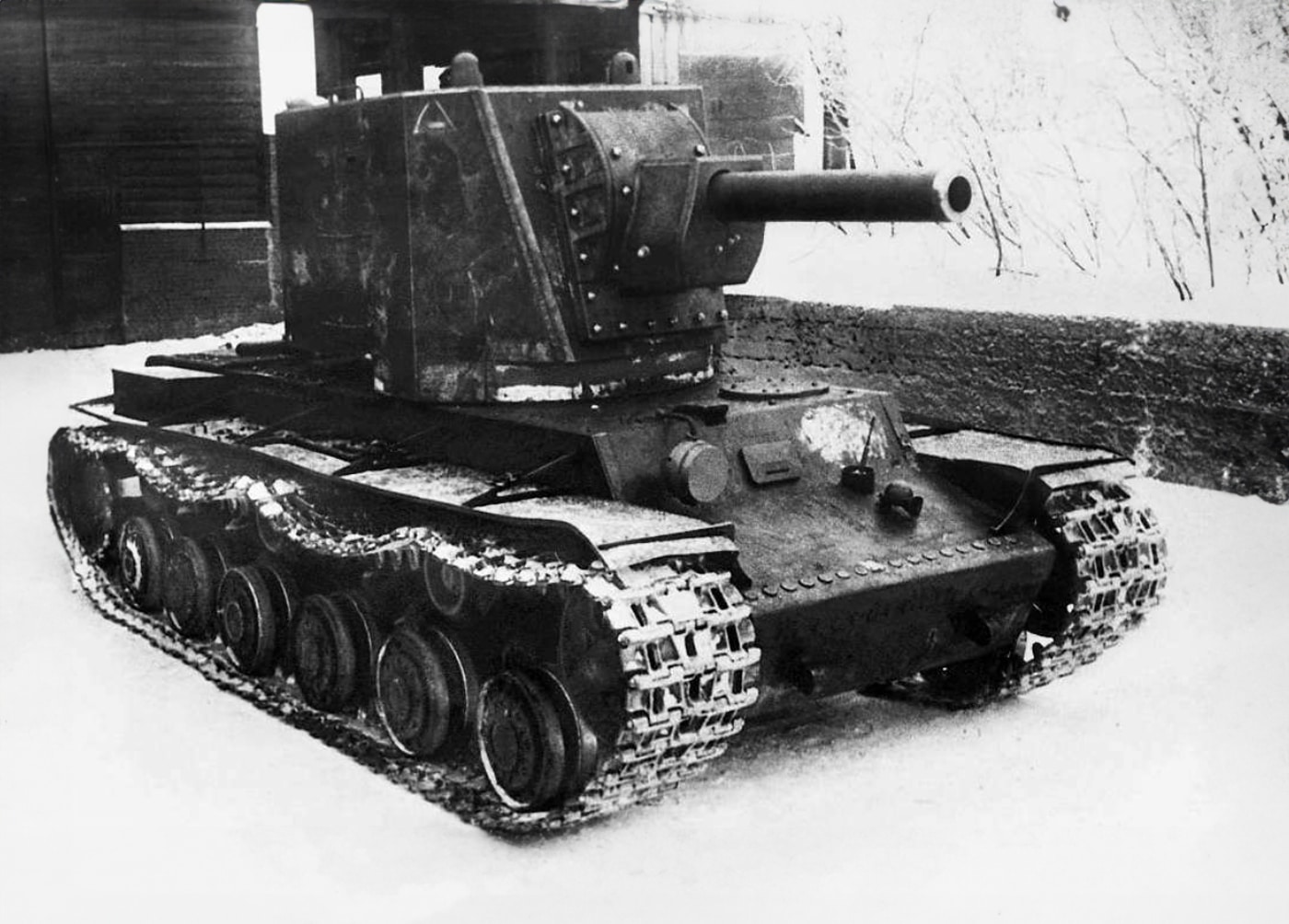
The first KV-2 tank prototype during testing in February 1940. After encountering reinforced Finnish bunkers during the Winter War, the Soviets discovered the need for increased firepower.
KV-2s used by the Germans were known as(Sturm)Panzerkampfwagen KV-II 754(r).
Army Group North jumped off from positions along the border separating East Prussia from Lithuania.
The Russian tank crew had meanwhile severed telephone communication between the bridgehead and the division command post.
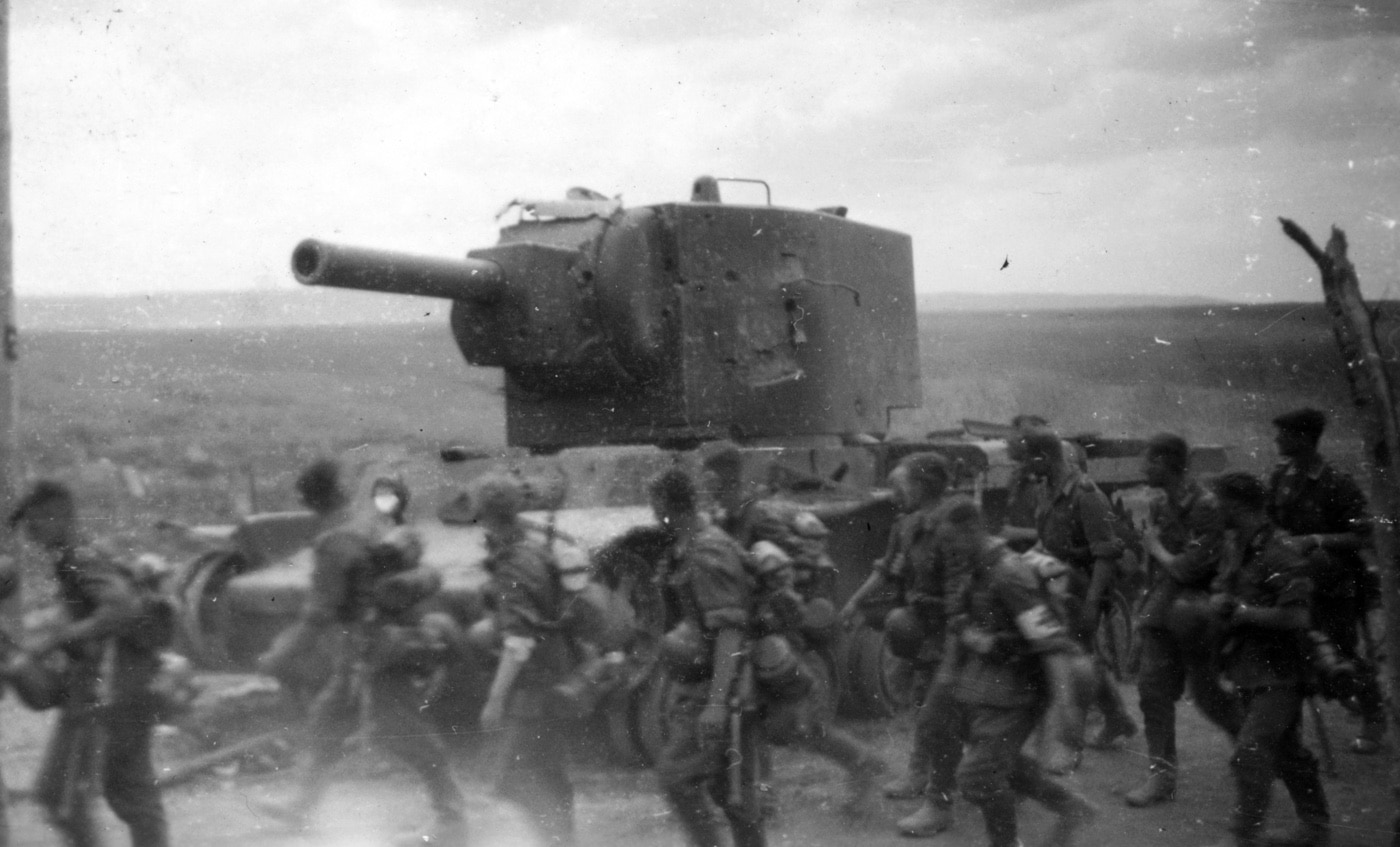
German troops pass a knocked-out KV-2. While the tank’s combat career was relatively short, it was respected by the German army and ushered in a new era of massive, armored vehicles. Image: Public Domain
The Russian plan was not clear.
The tank battalion, which was deployed in a forest southeast of the bridgehead, prepared for a counterattack.
During the rest of the day the tank did not move.
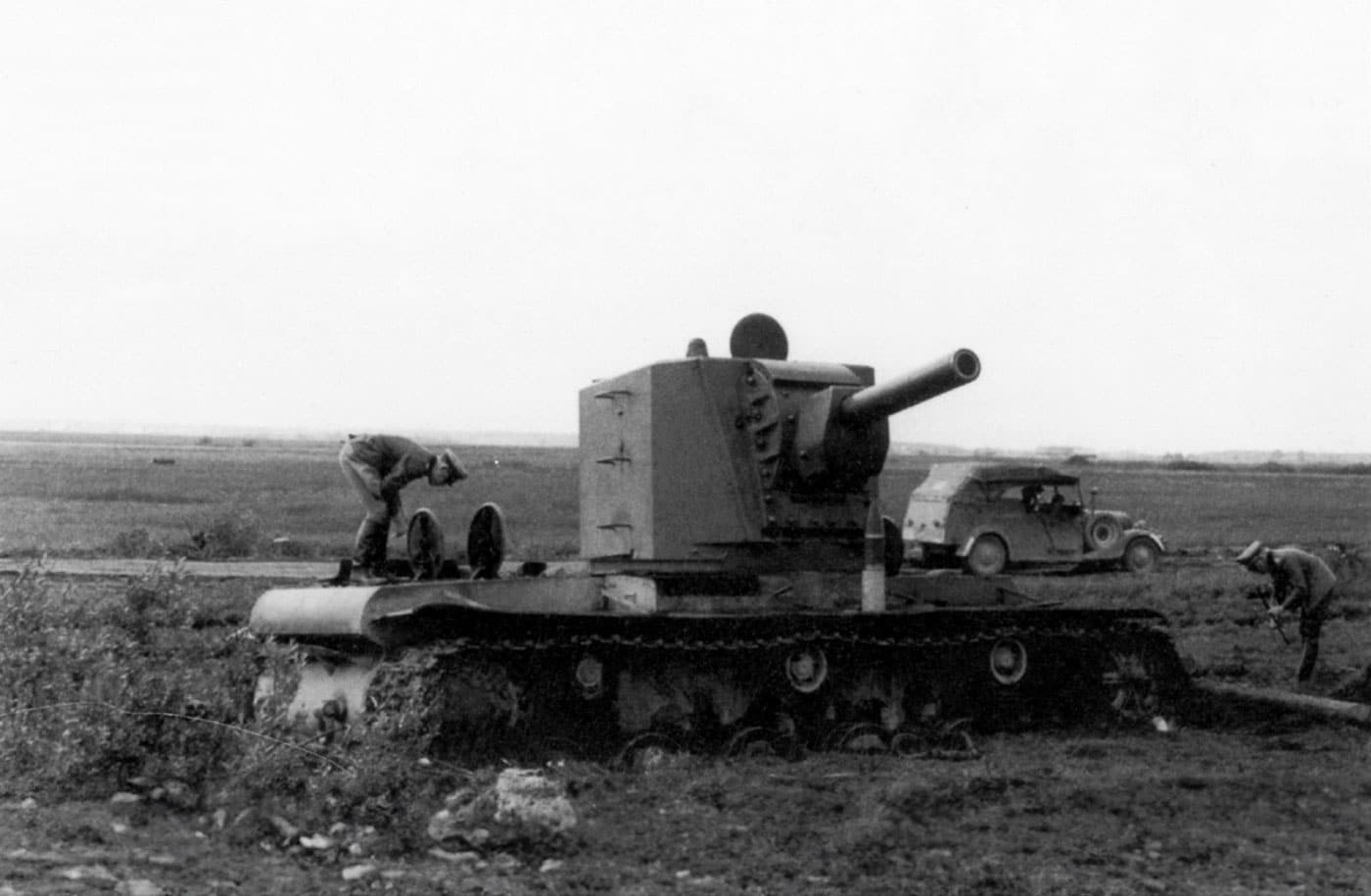
Germans inspect the damaged Soviet KV-2 near Raseiniai during the Battle of Raseiniai during World War II. Image: Public Domain
All 12 were destroyed by the Russian tank.
A German reconnaissance patrol sent out around noon could find no evidence that a general Russian attack was impending.
The Germans could not evacuate their wounded from the bridgehead.
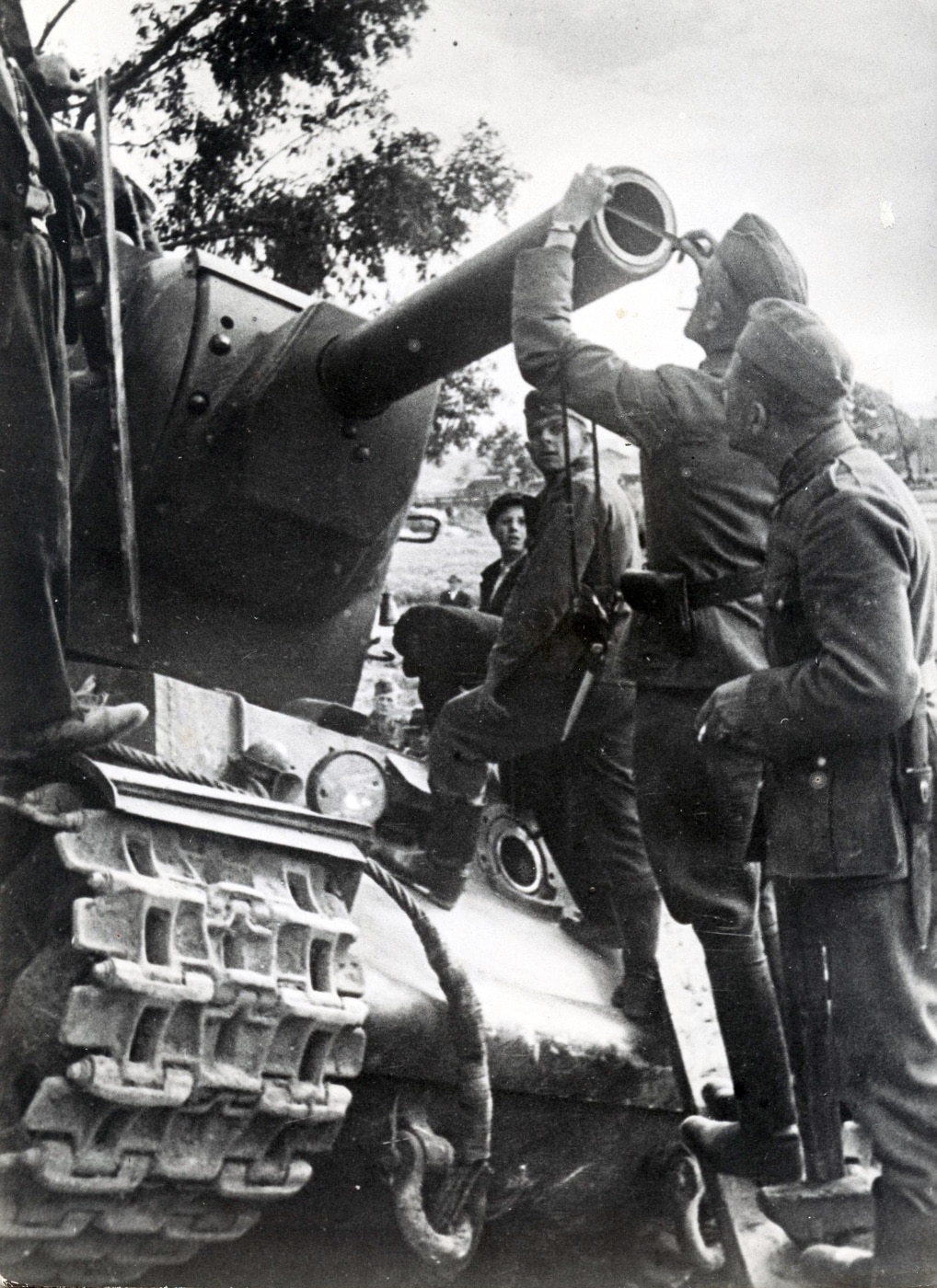
German intelligence gathering teams were stunned by the size of the KV-2, as its armament and armor protection was far greater than any vehicle in the Wehrmacht inventory. Image: Author’s collection.
On the same day, an antitank battery with 50-mm.
guns was ordered to work its way forward and destroy the tank.
The battery confidently accepted this mission.
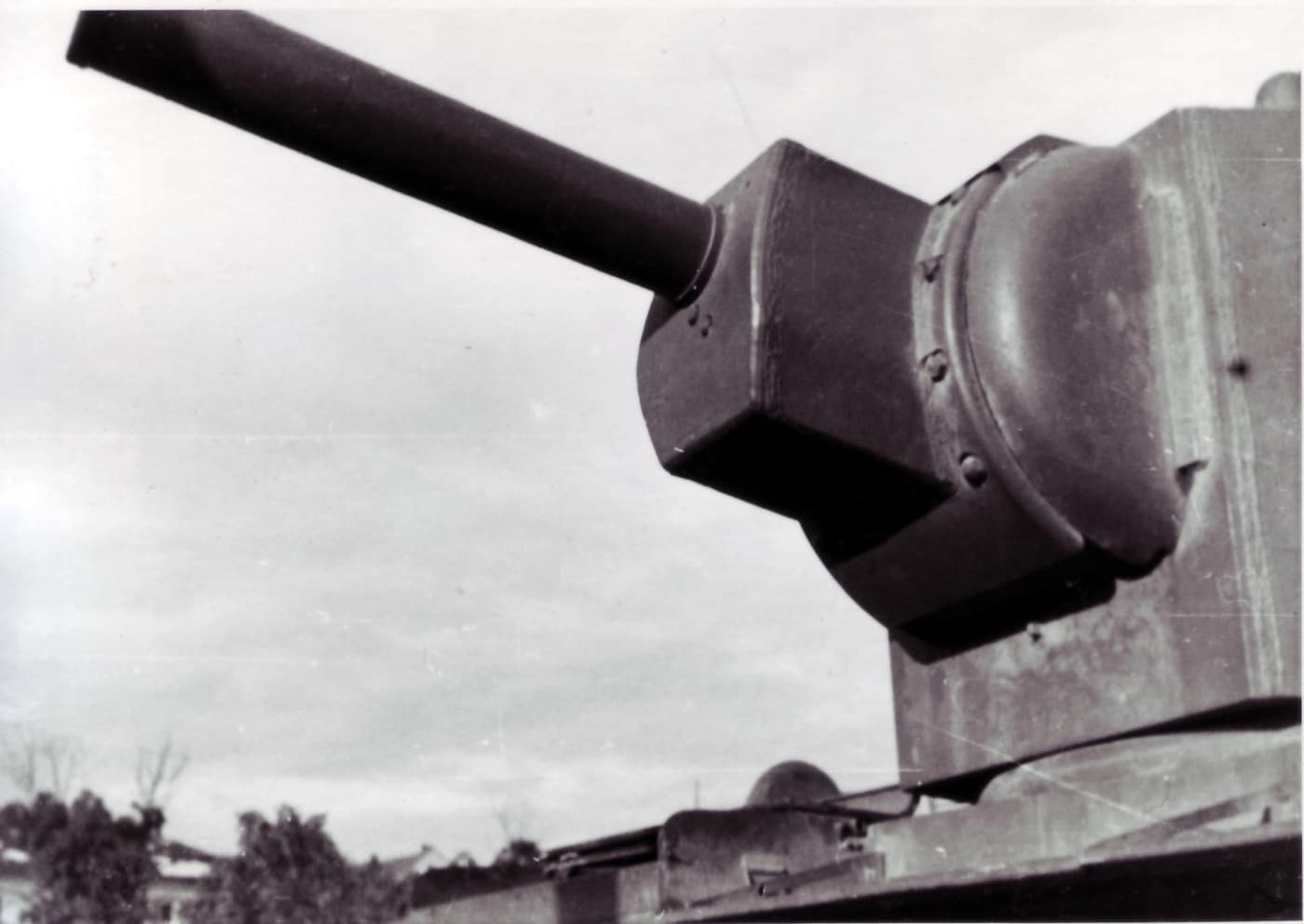
A close-up of the KV-2’s massive armored mantlet for its 152mm M-10T howitzer. Image: Author’s collection
Still the tank did not move.
The first round, from about 600 yards, was a direct hit.
A second and a third round followed.
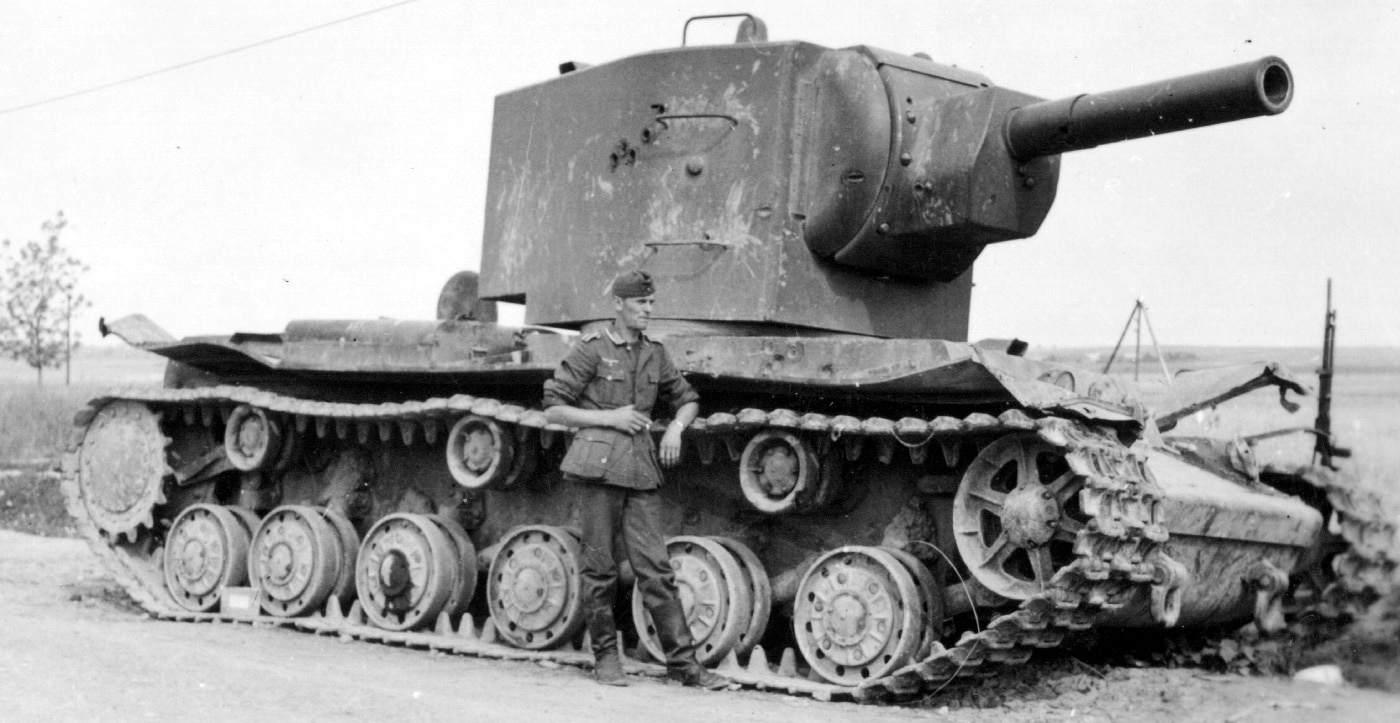
The Soviet KV heavy tanks were an unexpected challenge for the Germans during the summer of 1941. This KV-2 has been hit multiple times by German 50mm AT fire. Image: Author’s collection
The troops assembled on the hill near the combat teams command post cheered like spectators at a shooting match.
Still the tank did not move.
Having suffered heavy casualties, the gun crews were withdrawn to avoid further losses.
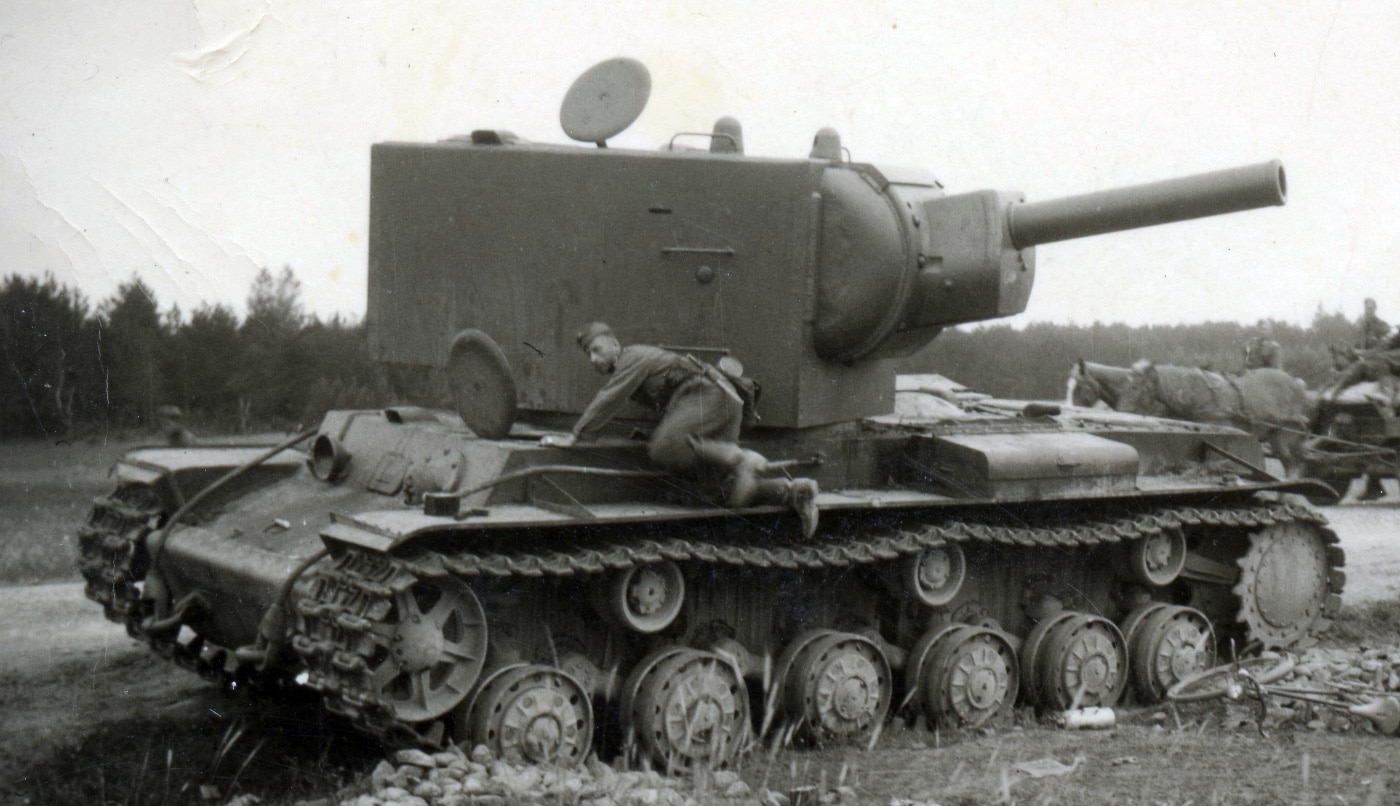
German soldiers often had their photo taken with captured “Red Colossus” tanks. Image: Author’s collection
Not until after dark could the damaged guns be recovered.
antitank guns had failed to pierce the 3-inch armor, it was decided that only the 88-mm.
flak gun with its armor piercing shells would be effective.
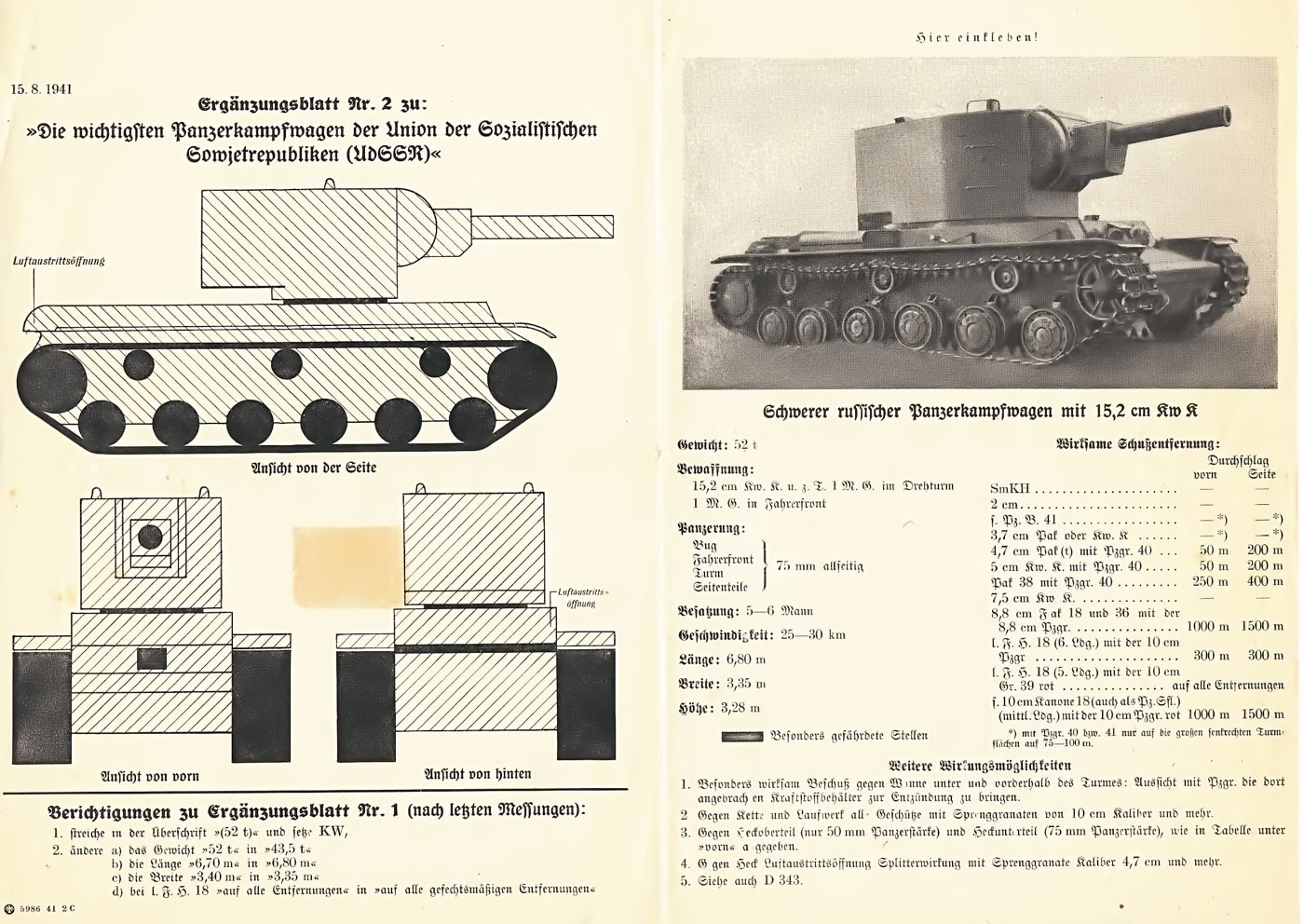
This shows a German recognition guide on the Soviet KV-2 tank. The KV-2 was one of several Russian armored vehicles featured in German training videos detailing anti-tank tactics. Image: NARA
That same afternoon an 88-mm.
Every round scored a direct hit, and the gun crew suffered heavy casualties.
Meanwhile, the bridgeheads supplies were running so low that the troops had to eat their canned emergency rations.
A staff meeting was therefore called to discuss further ways and means of dealing with the tank.
It was decided that an engineer detachment should attempt to blow it up in a night operation.
He ordered the company to count off and chose every tenth man.
The detachment was told about its mission, given detailed instructions, and issued explosives and other essential equipment.
Under cover of darkness the detachment moved out, led by the company commander.
As the engineers approached the tank, they could distinguish its contours in the pale starlight.
The Germans thought that the tank crew had dismounted.
The figures handed something to the tank crew, and the sound of clinking dishes could be heard.
The Germans concluded that these were partisans bringing food to the tank crew.
The temptation to overpower them was great, and it probably would have been a simple matter.
Such an action, however, would have alerted the tank crew and perhaps wrecked the entire scheme.
After about an hour the partisans withdrew, and the tank turret was closed.
It was about 0100 before the engineers could finally get to work.
A violent explosion ripped the air.
The tank did not move.
Doubtful of success, the engineer detachment returned to the bridgehead and made its report.
One of the twelve men was listed as missing.
When the commanding officer halted the lone wanderer, all eyes turned to watch.
The colonel was heard asking the soldier for an explanation of his unmilitary appearance.
The tank, however, covered the area with sporadic machine gun fire following the explosion.
Hardly half of the track was destroyed, and I could find no other damage to the tank.
I returned to the assembly point only to find that the detachment had departed.
While looking for my boots I found that another demolition charge had been left behind.
I crept under the tank and detonated the charge.
The gun was only slightly damaged.
Someone had apparently taken my boots by mistake.
That is why I returned barefoot and late to my company.
Three German attempts had failed.
The tank still blocked the road and could fire at will.
Plan 5 involved a calculated risk and called for deceiving the tank crew.
It was hoped that in this way German losses would be kept to a minimum.
gun was to be brought up from Rossienie to destroy the tank.
The German armor deployed and attacked the Russian tank from three sides.
Meanwhile, the 88-mm.
gun took up a position to the rear of the tank.
Mortally wounded, the tank remained motionless, but did not burn.
armor-piercing shells hit their mark.
The Germans closest to the tank dismounted and moved in on their victim.
To their great surprise they found that only two of the 88 mm.
shells had pierced the tank armor, the five others having made only deep dents.
Eight blue marks, made by direct hits of the 50-mm.
antitank guns, were found.
No trace of the fire from the German tanks could be found.
Suddenly, the gun barrel started to move again and most of the Germans scattered.
A dull explosion followed, and the turret cover blew off.
Inside were the mutilated bodies of the crew.




